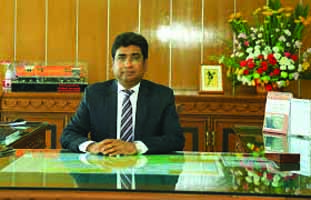NE NEWS SERVICE
NEW DELHI, JULY 23
The railways will move towards contactless ticketing like at airports with QR code-enabled tickets, which will be scanned on handheld devices and mobile phones at the stations and on the trains, a senior official of the national transporter said on Thursday.
Railway Board Chairman VK Yadav said while 85 percent train tickets are currently being booked online, a QR code will also be available for those buying tickets from counters.
“We have introduced a QR code system, which will be given on tickets. If one buys online, the code will be provided on the ticket. Even on window tickets, where one gets a physical ticket, a text message will be sent to the passenger’s mobile phone, which will have a link, and the QR code will be displayed when the link is touched.
“Then the TTE at the stations or on the trains, either with their hand-held equipment or through their mobile phones which will have a QR application, will be able to scan the code and immediately capture the details of the passengers. So the ticketing system will be completely contactless,” he said.
Yadav said the railways is not planning to go completely paperless as of now, but will considerably reduce its use by facilitating online booking of reserved, unreserved, and platform tickets.
He also said an online recharge facility of suburban cards and Kolkata Metro has been enabled. A pilot project of contactless ticket-checking with an airport-like check-in for all passengers entering the station has been introduced at Prayagraj Junction of North Central Railway.
A spokesperson of the North Central Railway explained how the process works at the Prayagraj station.
As a passenger enters the station premises, the QR code of his ticket is scanned through a mobile application and this gets updated in the software’s database. The time of scanning the QR code also gets updated in the application.
The station has check-in counters to minimise the exposure of the checking staff to the passengers. The QR code is scanned and the thermal screening of passengers initiated at these counters, the official said.
He added that the onboard ticket-checking staff also gets information on passengers simultaneously — all information is provided to their handheld machines, including a coach-wise display with the number of berths, unbooked berths, and number of boarding passes.
“This will help the smooth functioning of the line staff and also help to relay the details of the vacant berths to the next location in a real-time mode,” the official said.
Yadav said the IRCTC website will be completely revamped and the processes simplified, personalised and even integrated with hotel and meal bookings.
He said the railways has digitised all its assets for better monitoring. It has also established geo-portal and developed applications for all its fixed assets such as tracks, signalling, OHE, and other electrical assets, which have been mapped, the Railway Board chairman added.
The land plans of the national transporter have been authenticated, digitised and geo-referenced, Yadav said, adding that the railways has introduced digital initiatives in its freight and train operations.
The Freight Operations Information System (FOIS), e-registration of demand and E-payment Gateway, Integrated Coaching Management System (ICMS), Control Office Application (COA), Crew Management System (CMS), Software-aided Train Scheduling System (SATSANG), Safety Information Management System (SIMS), auto-generation of optimised loco links are some of the applications that are being used for a smooth movement of goods trains, he said.
Yadav said the railways has signed a memorandum of understanding (MoU) with the Indian Space Research Organisation (ISRO) for satellite-tracking of trains. This captures real-time data relating to the speed and location of the trains, provides real-time communication to passengers about arrival and departures and analytics for improved operation, he added.
In the first phase, GPS devices have been fitted on 2,700 electric locomotives and 3,800 functional diesel locomotives. In the second phase, an additional 6,000 locomotives will be integrated by December 2021, the Railway Board chairman said.












